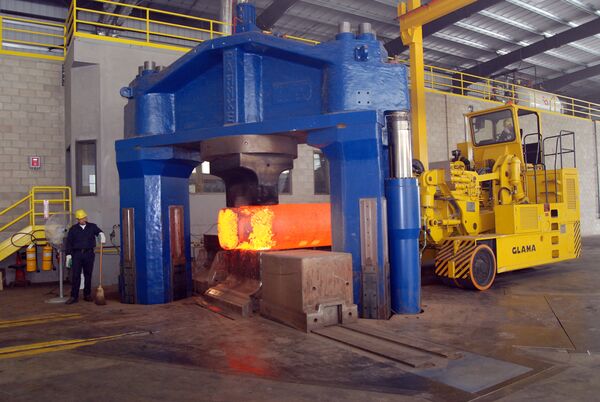
A forging press shapes a heated block of titanium. (Weber Metals)
The forging industry is a key element of the US industrial base. Commercial aircraft have more than 1,000 forgings, while smaller fighter aircraft have somewhat fewer, James Warren, president and CEO of the Forging Industry Association (FIA), told reporters in Washington, DC on 9 October. A heavy tank contains around 550 forgings, according to an FIA factsheet. As the health of the defence industrial base has come under scrutiny, defence firms and the Department of Defense (DoD) have raised concerns about the forging industry.
Forging is often lumped with casting, but they are different capabilities, Warren said. Forging involves heating metals and then pressing it into the desired shape. He described the heated metal as being similar to ‘Play Doh', enabling it to be shaped using forging processes. Casting involves putting liquid metal into a mould. Casting can provide a more precise shape and detail, but it will have some porosity and will not be as strong as a forging, according to Warren.
There are three primary forging processes, he noted. The most common is closed die or impression forging, typically for making a specific tool or shape, including parts such as suspensions, crankshafts, or valves. Open die forging is used for massive pieces of steel to make parts such as a ship shaft. Finally, there is rolled ring forging in which tooling presses the metal at various angles to make rings or bearings.
Looking to read the full article?
Gain unlimited access to Janes news and more...







